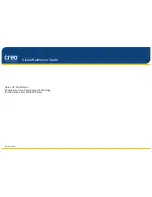
Eelectron Spa
IN00B02WEBFI00060140_KNX_MANUAL.DOCX
13/42
If you select an ESF file, you are automatically prompted to upload the corresponding PHD file as
well. It is not mandatory to upload the PHD file; if you do not, HORIZONE SERVER will not be able
to monitor the status of the physical devices present in the system, as detailed below.
Finding status feedback
As indicated, there may be group addresses within the ETS project that are intended solely for
sending status feedback on the bus, in the event of changes in the status of actuators or similar
devices.
These addresses do not usually have to be displayed in the supervision, but conversely, they should
be “associated” with the command group addresses of the corresponding actuators, so that
HORIZONE SERVER also remains aligned if changes are made to the status of the latter.
HORIZONE SERVER provides two distinct status feedback search algorithms:
●
Automatically search for communication objects associated with multiple group addresses in
the ETS project
●
Use rules based on group name and/or address
In the first instance, communication objects belonging to more than one group address are searched
for during import; a relationship is created, for each communication object, between the KNX object
representing the first group address (identified as “principal”, typically used for the command) and
the KNX objects associated with the other group addresses (typically, status feedback, but also any
multiple commands involving the same actuator).
The second method allows you to define a set of custom rules with which to search for associations
between group addresses and create the resulting relationships between KNX objects within the
supervision. Press the "CONFIGURE" button to define import rules: the following page is displayed...














































